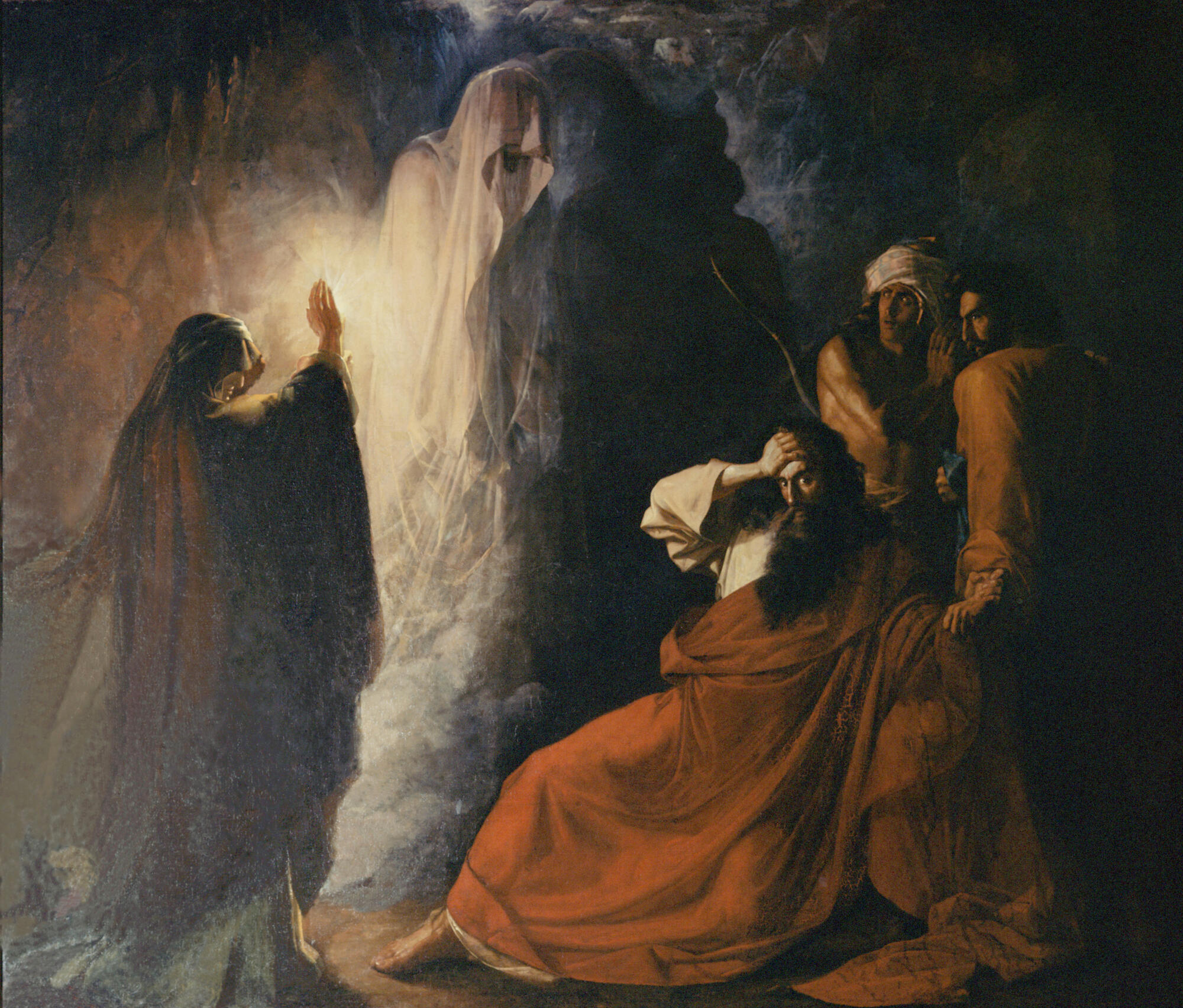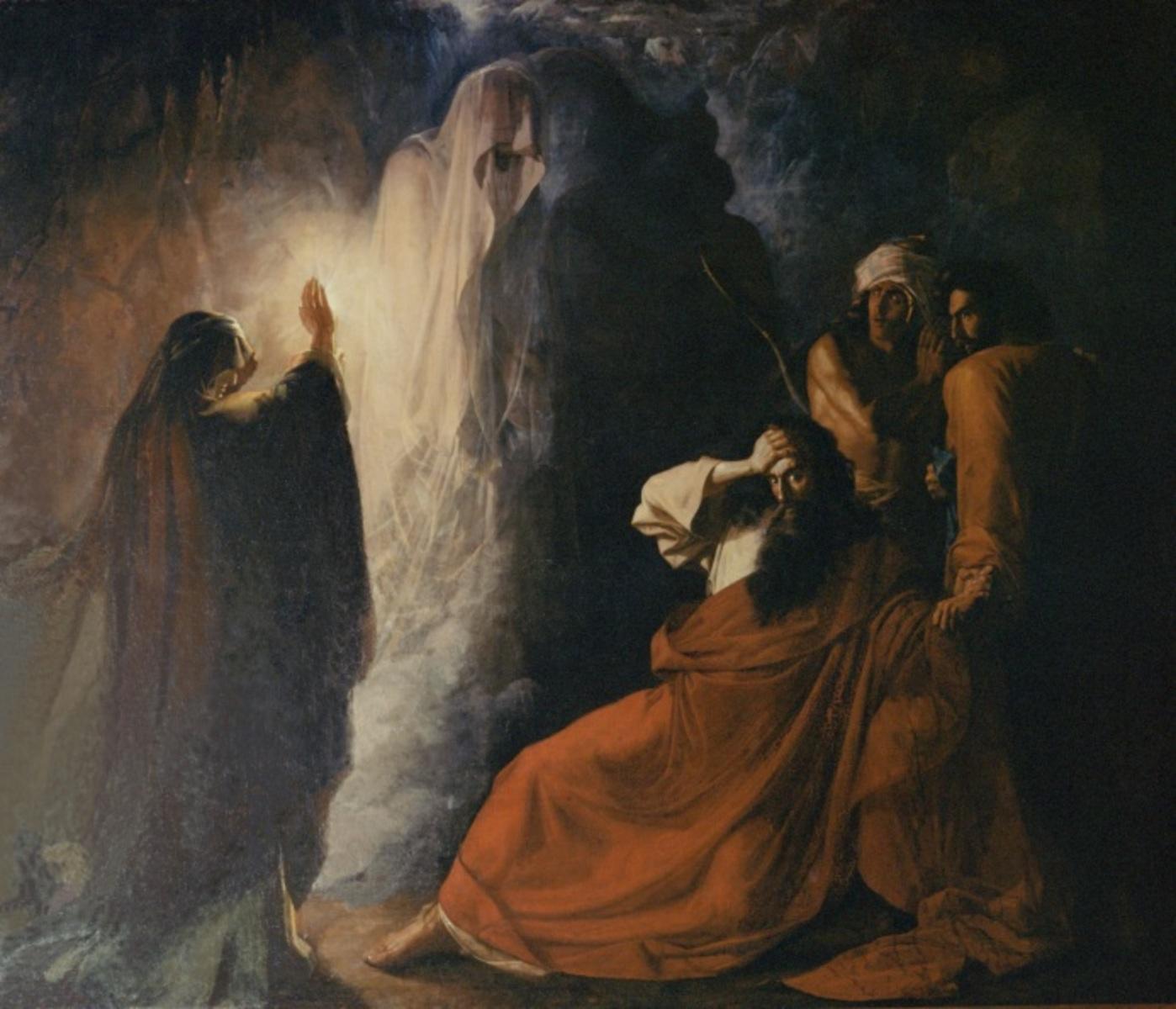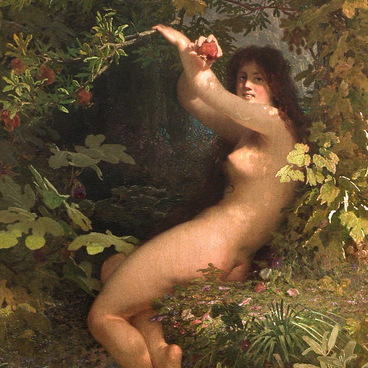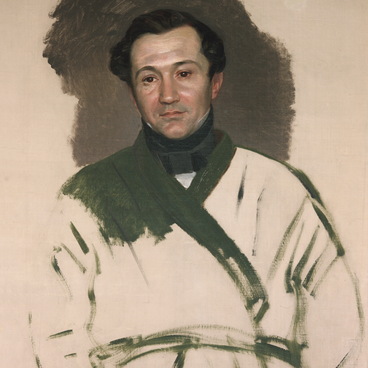The Russian artist Dmitry Martynov was an academician of the Imperial Academy of Arts. However, he achieved success only later in life.
Until the beginning of the 20th century, the students of the Imperial Academy of Arts in Saint Petersburg could compete for the Large Gold Medal, which was awarded for the best final work. The winners were granted a scholarship to study abroad.
Dmitry Martynov kept submitting his paintings for the competition for five years. In 1857, he won the Large and Small Gold medals for his painting “The Witch of Endor Summons the Spirit of the Prophet Samuel”. The thirty-year-old artist got an internship in Europe, and six years later, he returned to Saint Petersburg and became an academician of history and portrait painting.
In the 19th century, biblical stories were often depicted by painters. The Academy of Arts used to choose a theme for each contest. That time the narrative came from the First Book of Kings of the Old Testament. According to the Bible, Saul was the first king of Israel, the founder of the state and the Jewish army. He was tall and handsome, but irascible and arrogant. Saul was initially blessed by the Lord, but he lost God’s favor after disobeying the prophet Samuel. When Samuel died, Saul stopped carrying out the will of God. The King also expelled and executed all the fortune tellers.
On the eve of the fateful battle with the Philistines, Saul wanted to learn its result and went to see a witch who lived in a cave at Endor. She summoned the spirit of the prophet Samuel, and he told Saul, “Why then do you ask me, since the Lord has departed from you and has become your adversary? Moreover the Lord will also give over Israel along with you into the hands of the Philistines, therefore tomorrow you and your sons will be with me.” The prophecy came true — Saul’s three sons were killed and the king committed suicide.
The story about Saul dealt with one of the artist’s favorite themes — the theme of fate. Martynov depicted the night, the cave, the prophet’s scary ghost and the witch’s dark silhouette — all this created a mysterious atmosphere. Saul’s shock and his companions’ fear illustrated the victory of higher forces and human helplessness. There is a stark contrast between the dynamic and emotional group around the king on the one hand and the monolithic erect figures of the spirit and the witch on the other. The color palette enhances the tense mode and the anticipation of misfortune.
Until the beginning of the 20th century, the students of the Imperial Academy of Arts in Saint Petersburg could compete for the Large Gold Medal, which was awarded for the best final work. The winners were granted a scholarship to study abroad.
Dmitry Martynov kept submitting his paintings for the competition for five years. In 1857, he won the Large and Small Gold medals for his painting “The Witch of Endor Summons the Spirit of the Prophet Samuel”. The thirty-year-old artist got an internship in Europe, and six years later, he returned to Saint Petersburg and became an academician of history and portrait painting.
In the 19th century, biblical stories were often depicted by painters. The Academy of Arts used to choose a theme for each contest. That time the narrative came from the First Book of Kings of the Old Testament. According to the Bible, Saul was the first king of Israel, the founder of the state and the Jewish army. He was tall and handsome, but irascible and arrogant. Saul was initially blessed by the Lord, but he lost God’s favor after disobeying the prophet Samuel. When Samuel died, Saul stopped carrying out the will of God. The King also expelled and executed all the fortune tellers.
On the eve of the fateful battle with the Philistines, Saul wanted to learn its result and went to see a witch who lived in a cave at Endor. She summoned the spirit of the prophet Samuel, and he told Saul, “Why then do you ask me, since the Lord has departed from you and has become your adversary? Moreover the Lord will also give over Israel along with you into the hands of the Philistines, therefore tomorrow you and your sons will be with me.” The prophecy came true — Saul’s three sons were killed and the king committed suicide.
The story about Saul dealt with one of the artist’s favorite themes — the theme of fate. Martynov depicted the night, the cave, the prophet’s scary ghost and the witch’s dark silhouette — all this created a mysterious atmosphere. Saul’s shock and his companions’ fear illustrated the victory of higher forces and human helplessness. There is a stark contrast between the dynamic and emotional group around the king on the one hand and the monolithic erect figures of the spirit and the witch on the other. The color palette enhances the tense mode and the anticipation of misfortune.



